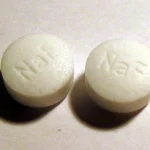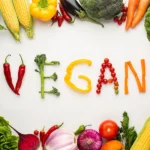
Increase your biology knowledge with this great collection of interesting biology facts. Learn about cells, DNA, ecology, natural selection, bacteria, viruses, yeast, evolution, cloning and much more.
People that study biology are known as biologists.
The synthetic biological cell “Synthia” is the first living organism whose parent is not a living thing but a computer.
Humans share 60% of DNA with a banana.
Australia’s Great Barrier Reef is the largest living structure on Earth. Reaching over 2000 kilometres (1240 miles) in length.
The first person to see a live cell with a microscope was Antonie van Leeuwenhoek, in 1674.
Ecology is the study of ecosystems and how organisms interact with their environment.
While some bacteria can make you sick, others have positive benefits such as helping you digest food or even make yoghurt.
Moulds, yeasts and mushrooms are types of fungus.
The common cold is a type of virus.
Viruses can be treated with antiviral drugs.
Bacteria are extremely small and are made up of just one cell.
Bacterial infections can be treated with antibiotics.
Like humans, armadillos can suffer from the disease leprosy. There are also cases of transmission of this disease from an armadillo to human.
Animals that eat plants as their primary food source are known as herbivores.
Endangered species are those that are in danger of being completely wiped out, they include blue whales, tigers and pandas. Without protection these species may eventually become extinct.
There’s about 1.8m (6 ft) long DNA inside every cell nucleus in our body, and an average adult body contains around 50 trillion (million million) cells.
Corneas are the only tissues that don’t require blood.
Only 15% of the world’s population can wiggle their ears!
To avoid predators, a mother Slow Loris licks its offspring with poison before sending them off to search for food.
The Golden “Poison Dart” frog in South America is most poisonous vertebrate in the world.
Rafflesia Arnoldii is the largest flower in world, and can grow as big as an umbrella.
The world’s smallest flowering plant is the Wolffia, whose one full bouquet of flowers can fit on the head of a push-pin.
The world’s smallest frog – The Little Grass Frog – is no bigger than a house fly.
With more than 80,000 arms, the Basket Starfish has the greatest number of arms.
Armadillos spend about 80% of their lives asleep.
The human heart has enough pressure to squirt blood up to 30 feet away.
The tongue of a blue whale is bigger than a taxi cab, and can weigh as much as an elephant.
There are more insects in a single square mile of fertile soil than there are people on the entire earth.
The human eye blinks an average of 4,200,000 times each year.
Fleas can jump 130 times higher than their own height. In human terms, that’s a 6ft tall person jumping 780 ft in the air.
Born on July 5th 1996, Dolly the sheep was the first mammal to be cloned from an adult cell.
When the DNA of an organism changes and results in a new trait (characteristic) it is known as mutation.
French chemist and microbiologist Louis Pasteur was well known for inventing a process to stop various foods and liquids making people sick. Called Pasteurization, it reduces the amount of microorganisms that could lead to disease without having a noticeable effect on taste and quality in a way which methods such as sterilization might.
The Giant Kelp algea (Macrocystis pyrifera) is the fastest growing organism on earth and can grow at a rate of 70cm (two feet) a day.
Charles Darwin developed the idea of natural selection, sometimes called survival of the fittest. It is a process that involves living things with favorable traits being more likely to reproduce, passing on their favorable traits to future generations.
Frequently Asked Biology Questions:
Here are some common biology questions with informative answers:
1. What is biology?
Biology is the study of life, encompassing all living organisms on Earth, from single-celled bacteria to complex ecosystems. It delves into their structure, function, growth, origin, evolution, and distribution. Biology also explores how living things interact with each other and their environment.
2. What are the basic building blocks of life?
Cells are the fundamental unit of life. All living things are composed of one or more cells. These cells contain even smaller structures called organelles, which perform specialized functions like energy production, waste removal, and protein synthesis. The instructions for building and maintaining these structures are encoded in our DNA, the hereditary material found within cells.
3. What are the main groups of living things?
Biologists classify living things into different groups based on shared characteristics. The two main categories are eukaryotes and prokaryotes. Eukaryotes have a membrane-bound nucleus containing their DNA, while prokaryotes lack a true nucleus and their DNA is free-floating in the cytoplasm. Further classification divides these groups into kingdoms, such as animals, plants, fungi, protists, archaea, and bacteria.
4. How do living things reproduce?
There are two main modes of reproduction: sexual and asexual. Sexual reproduction involves the fusion of genetic material from two parents, resulting in offspring with a unique combination of traits. Asexual reproduction involves a single organism creating offspring that are genetically identical. Different organisms utilize various methods within these categories, like seed production in plants or binary fission in bacteria.
5. What is the theory of evolution by natural selection?
This theory, proposed by Charles Darwin, explains how populations of living things change over time. It suggests that individuals with traits best suited to their environment are more likely to survive and reproduce, passing on those advantageous traits to their offspring. Over generations, this process can lead to the gradual emergence of new species.
6. What are cells made of?
Cells are composed of various organic and inorganic molecules. Organic molecules include carbohydrates (sugars and starches), proteins, lipids (fats), and nucleic acids (DNA and RNA). These molecules perform essential functions like providing energy, building structures, and carrying genetic information. Inorganic molecules, like water and salts, are also crucial for cell function.
7. What is photosynthesis?
Photosynthesis is a process used by plants, algae, and some bacteria to convert light energy from the sun into chemical energy stored in glucose (sugar). This process utilizes carbon dioxide from the atmosphere and releases oxygen, making it vital for life on Earth.
8. What is cellular respiration?
Cellular respiration is the process by which cells convert glucose into usable energy (ATP) through a series of controlled chemical reactions. This energy is essential for all cellular functions, including growth, movement, and reproduction. Unlike photosynthesis, cellular respiration consumes oxygen and produces carbon dioxide.
9. What are genes and how do they work?
Genes are specific regions of DNA that contain instructions for building proteins. These proteins are the workhorses of cells and carry out various functions. The order of nucleotides (A, T, C, G) in DNA determines the protein structure and function. When a gene is expressed, the DNA code is copied into RNA, which carries the instructions to ribosomes in the cytoplasm where proteins are assembled.
10. What is the importance of ecology?
Ecology is the branch of biology that studies interactions between organisms and their environment. It explores how populations of living things adapt to their surroundings, how different species interact with each other, and the flow of energy and matter through ecosystems. Understanding ecological principles is crucial for addressing environmental issues like climate change and biodiversity loss.









